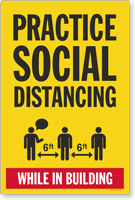I often describe the dedication involved with a career in research as well as how scientists can spend their entire careers studying a very specific aspect of a disease process. I enjoyed reading this article about Dr. Kati Kariko, a Hungarian-born scientist, whose research laid the foundation for the future of the mRNA vaccines which today protect us against COVID-19.
Tag: COVID-19
Evidence for COVID-19 benefit from vitamin D?
An interesting question which will require additional research is whether vitamin D may play a role in COVID-19. Vitamin D is known to be essential to immune function. Some initial research suggests that vitamin D may reduce COVID-19 severity by suppressing the cytokine storm in COVID-19 patients. Vitamin D deficiency is more common among persons with naturally dark skin. The pigment (melanin) in dark skin doesn’t absorb as much UV radiation, which stimulates natural skin production of vitamin D. This may contribute to an explanation for why African-American and Latinos in the US are more likely to become infected with SARS-CoV2 and experience more severe COVID-19, including being more likely to die from the disease.
A recent study of 14,000 members of an Israeli HMO who were tested for SARS-CoV2 infection from February 1st to April 30th, 2020, and who had at least one previous blood test for plasma vitamin D levels found that low plasma vitamin D levels were associated with an increased likelihood of COVID-19 infection and of hospitalization due to COVID-19.
Undoubtedly more research will continue to shed light (excuse the pun) on this topic.
Is SARS-CoV2 transmissable via aerosols?
That is one of the (many) million dollar questions during this COVID-19 pandemic. Whatever the answer, public health recommendations to wear masks and keep distance from others are both necessary and precautionary as cases continue to rise in the United States. An excellent review of the science by Jayaweera et al. is found here: https://www.sciencedirect.com/science/article/pii/S0013935120307143?via%3Dihub. Conclusion: we need more research to understand the virus as well as to make evidence-based decisions around prevention.
Webinar: The Epidemiology of COVID-19 at 6 months: 10 things we know and 10 we don’t
Friday, June 19, 2020 at 11:00 AM
As we arrive at the 6-month mark from when the world was first introduced to SARS-CoV2 from its origins in Hubei province, China, scientists, medical doctors and public health professionals have been working at a frenzied pace to understand the new virus. This webinar will review what is currently known about the epidemiology COVID-19, the disease caused by the virus, and discuss what we still need to learn. The presentation will include an overview of core concepts in epidemiology which we will apply to our discussion.
To watch a recording of the webinar: https://tinyurl.com/ycwe4uqa
Racial/ethnic disparities in COVID-19
Preliminary data from California on COVID-19 cases and deaths through May 20, 2020 suggest racial/ethnic disparities in adults diagnosed and dying from the disease caused by the novel coronavirus, SARS-CoV2. While there were substantial amounts of missing data (30% of cases and 2% of deaths were missing information on race/ethnicity) and data are dependent on testing to identify cases, two patterns have emerged. First, adults of Latino and Native Hawaiian/Pacific Islander race/ethnicity are disproportionately more likely to be infected with SARS-CoV2 relative to the proportion of the California population that they make up. Adults of African-American/Black race/ethnicity made up a greater proportion of deaths from COVID-19 relative to their proportion of the California population. The demographic data do not tell us why these patterns may exist but some hypotheses have been put forth. Cases, which indicate infection with COVID-19, may be associated with socioeconomic factors, such as, employment in essential occupations, being less able to work from home or less able or compliant with social distancing. Deaths, which indicate more severe disease once infected, may be reflective of less access to health services, more prevalent comorbidities, or vitamin D deficiency (vitamin D is essential to immune function). More research is needed to examine these potential racial/ethnic disparities.
Pandemic EpiSpeak

Students who have taken one of my classes in epidemiology at CGU will probably remember me saying that learning epidemiology is, in many ways, comparable to learning a new language. Like many other fields, in epidemiology, we use specific words to indicate specific things. Hopefully my students are having fond memories right about now of the terminology we learned in class, for example, to describe disease occurrence in populations.
Our “EpiSpeak” also includes terms used in efforts control epidemics, as we are currently with the COVID-19 pandemic. I’ve heard some mixing of terms circulating such as referring to our stay-at-home order as “quarantining”.
Here is some clarity on three key terms: isolation, quarantine and physical distancing (also called social distancing) citing the World Health Organization.
“Isolation means separating people who are ill with symptoms of COVID-19 and may be infectious to prevent the spread of the disease.”
“Quarantine means restricting activities or separating people who are not ill themselves but may have been exposed to COVID-19.” By anticipating who might become sick, the goal is to prevent spread of the disease at the time when people just develop symptoms.
“Physical distancing means being physically apart. WHO recommends keeping at least 1-metre (3 feet) distance from others. This is a general measure that everyone should take even if they are well with no known exposure to COVID-19.” A goal of physical distancing is to slow the spread of disease by reducing the number of interactions we have with each other.
Be a steward of epi and apply these terms precisely! A benefit of this, I hope, is that we can reduce some of the confusion that is circulating and help to answer the question, “what can I do in the face of this pandemic”?
Inhale: Spring!

With all the scents of spring in the air, the least sensible thing I’ve done is to hesitate to breathe deeply the aromas fearing what else I’d take to my lungs!
Public Health and the Coronavirus: We should be pointing fingers at ourselves
When Congress reserved hot seats last week for two of our nation’s top health officials regarding the coronavirus epidemic in the US, it came as no bombshell revelation to my fellow public health colleagues to hear our system described as a “failure” during the testimony of the NIH’s Dr. Anthony Fauci. In truth, our situation in public health is akin to the same bad joke that keeps on being told: we are chronically underfunded to do the work we do to keep the public – Americans – healthy and safe. This unfortunate circumstance is well-known across public health circles; we talk about it as part of our schooling, discuss it at conferences, and cope with it in our workplaces. We in public health have become accustomed to doing more with less and being regarded as the step-sibling to our brothers and sisters in the medical profession. In some ways, we public health professionals can be understanding. Afterall, we recognize that it is difficult to perceive the fruits of our labors: prevention efforts keep people from getting sick (how really does one quantify the absence of disease?). We get that it is much easier to grasp what our medical counterparts do when a disease is treated and cured. Here my public health training prescribes that I point out how preventing disease is generally less costly than treating disease. Prevention approaches – be they vaccinations for infectious diseases, educational programs or anti-smoking policies – are some of the most effective interventions we have available, and they save lives. Prevention also means readiness; insufficient funding over time has had impacted our ability to anticipate, prepare and respond quickly and nimbly to threats such as natural disasters or novel viruses, such as is apparent today with COVID-19. The reality is that we need public health more than ever: we will face new challenges with continued population growth, global travel and migration, and changing habitats due to climate change. To succeed, our priorities need to shift as a nation. We need to support funding for public health. We need to vote for elected officials who value public health and advocate for public health with those in office. Public health is, at its core, just that – the health of the public. We all play a role in our public health, highlighted by the coronavirus epidemic. Otherwise, we can’t fairly criticize our public health professionals and need to save the finger-pointing for ourselves.